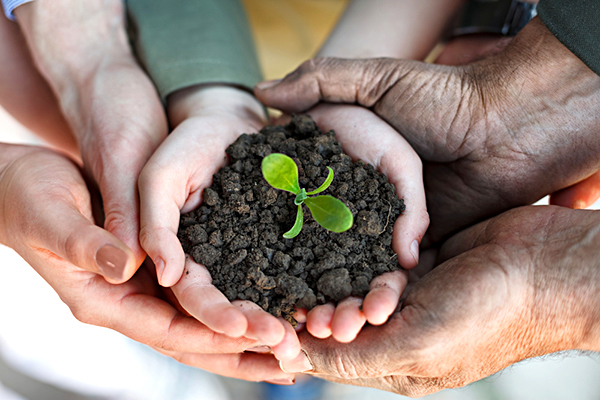Green Practices
Transforming Soil Hand-in-Hand
Do you know that nutrients naturally circulate through the environment from plants and animals and finally back to the soil where it starts all over again?
Do you know that we have been disrupting this cycle by tossing our organic “waste” (e.g. uneaten vegetables, fruit peel, coffee grounds) into landfills where they will completely lose their nutrient value?


To improve the soil quality, two groups of students spent the past year building soil. Richard Yeung, a student from Environmental Science, formed a team with two other passionate students, Soomin Park and Ivana Suradja, to reconfigure this rigged system – via composting. The project not only produces compost for direct use on campus; but also involves the development of a composting method and innovative composter design. The hope is that these new ideas will make the seemingly tedious process of mushing food and yard waste into soil conditioners much more efficient, sustainable and user-friendly.
According to Richard, “to tackle the intertwined problems of soil degradation, climate change and food insecurity, we must return good-quality organic matters to the soil, which is the guardian of our terrestrial ecosystem.” While Richard suggests we need to correct this broken nutrient cycle, he recognizes that there are several approaches worth considering to let the nutrients go back to the soil. One he promotes most vigorously is composting, which entails breaking down organic matter into smaller, plant-friendly materials within an oxygen-rich environment. Composting does not require much technology and can provide an easy to understand educational value to the public. However, composting has some drawbacks which have kept people from adopting it. Therefore, the team set out to improve the current composting methods to make it easy for everyone. The team built a composting system next to the LG7 orchard and filled the bins with fallen leaves collected around campus, vegetable waste from Milano Fresh, and coffee grounds from Starbucks and the LG1 canteen. After a series of field and laboratory work, they have obtained some interesting findings.

Another student group, as part of the SCB-HKUST Sustainable Campus Leadership Program, designed their project aiming to stop soil erosion on campus. Soomin Park, Shlok Jain, Joyce Feng, Jessica Wong and Sonia Mahtan conducted studies near the south gate parking lot, Cheng Yu Tung Building slope area and the Lee Shau Kee Business Building lawn. They found that adding compost, coffee grounds, bokashi “tea,” and restricting grass cutting can all contribute to stronger grass with faster growth and improved soil quality. More manpower and budget resources are needed to recycle the valuable nutrients and create a sustainable landscape condition. The group made some recommendations to the University’s horticulture team on ways to improve our soil and landscape on campus in the long run.
We believe that by getting their hands dirty with soil, our students have proven that there are more sustainable alternatives to our current practices. By building a good foundation and reference, we look forward to more students “digging into” this rich area of exploration!
